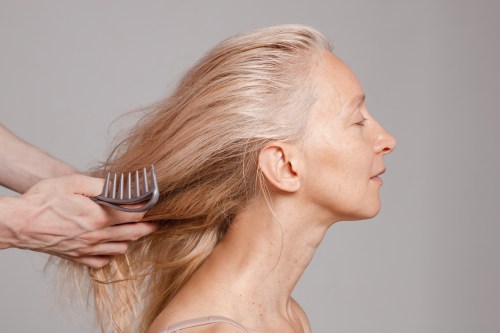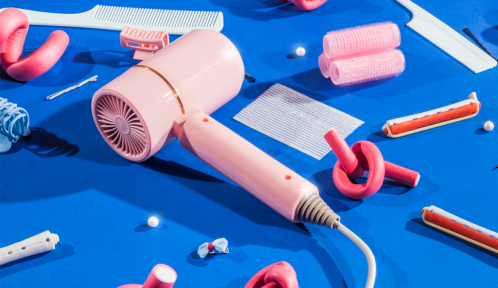Our editors independently select these products. Making a purchase through our links may earn Well+Good a commission
Can Stress Cause Dandruff? Derms Say: Unfortunately, Yes
A dermatologist answers the question: "Can stress cause dandruff?"—and explains why your flakes might be flaring up in pandemic times.

I try not to spend too much time inspecting my scalp (seriously, you never know what you might find up there). Now that the time afforded by quarantine has re-inspired my skin-care routine, though, I have allowed myself a peek or two at my side part. What I’ve found are flakes, flakes, and more flakes—and some high-level Googling tells me that the stress of COVID-19 might be to blame for my dandruffy scalp.
Hair-care brand Head and Shoulders explains that dandruff comes from a fungal microbe called malassezia globosa that always lives on your head, but multiplies when you present certain symptoms of stress. “Stress can have far-reaching effects on the body, and many skin conditions, including dandruff, often flare during stressful times,” says Maggie Kober, MD, a teledermatologist with Apostrophe. “Stress can influence hormone levels, which in some people can affect sebum production on the scalp. Higher amounts of sebum production create a more conducive environment for malassezia to grow and flourish.”
“Stress can have far-reaching effects on the body, and many skin conditions, including dandruff, often flare during stressful times.” —Maggie Kober, MD
In other words, the physical manifestations of pandemic stress cue up oil production all over your body. And like a Pac-Man munching on oils, malassezia feeds off of every last drop. Uh, ew. Considering that mental health provider Ginger reports that seven in 10 American say the COVID-19 outbreak is the single most stressful time of their lives, a few extra flakes on your scalp aren’t unlikely.
To send dandruff packing, Dr. Kober says your malassezia eviction protocols remain the same in COVID-19 times as they do in non-pandemic eras. First and foremost, avoid the itch. “This is often easier said than done, but try to avoid scratching your scalp when it becomes itchy. Scratching can start a vicious itch-scratch cycle, which ultimately makes the itching and irritation worse,” says Dr. Kober.
You should also consider swapping your normal shampoo for a dandruff-treating one that contains one or more of the following ingredients: zinc pyrithione (antibacterial and antifungal properties that attack malassezia), kletoconazole (an antifungal that fights malassezia), selenium sulfide (which prevents the buildup of dead skin cells), or salicylic acid (which exfoliates and decreases the amount of scales). It’s worth noting that dandruff shampoos have come a long way, both Nizoral A-D Anti-Dandruff Shampoo ($15) and Biolage Scalpsync Anti-Dandruff Shampoo ($19) nix flakes and leave hair soft and silky. Meanwhile, Head & Shoulders, in addition to concocting some of the most effective shampoos for every level of flake-age around, has launched scalp products a plenty. One stand-out is the zinc pyrithone-spiked Supreme Detoxifying Scalp Pre-Wash Mask ($3) that you apply before hopping in the shower to really target flakes. If you want to go the natural route, you can also mix essential oils for dandruff into any fragrance-free shampoo.
“When using anti-dandruff shampoo, be sure to let it sit on your scalp for five minutes before rinsing,” says Dr. Kober. “This allows enough time for the ingredients to take effect. Also be sure to rotate between two or three anti-dandruff shampoos. Over time, your scalp can build up a tolerance to the same shampoo, but alternating products can prevent this from occurring.” If you find that your flakes stay persistent after three weeks of treatment, Dr. Kober recommends seeing a tele-derm to talk next steps.
Eventually, you’ll rotate your shampoos until we’re on the other side of this pandemic—and hopefully, the stress (and flakes) become but a distant memory.
Here’s what it’s like to get a gross-yet-satisfying scalp facial:
Sign Up for Our Daily Newsletter
Get all the latest in wellness, trends, food, fitness, beauty, and more delivered right to your inbox.
Got it, you've been added to our email list.










